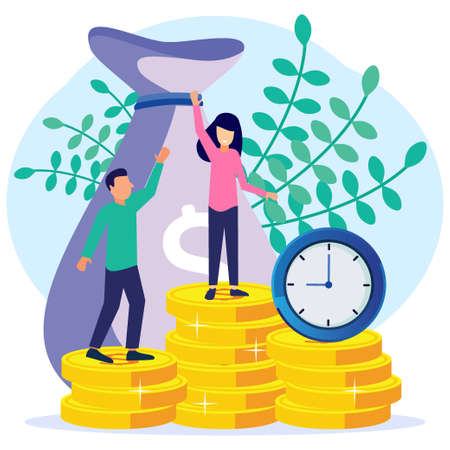Introduction: The Role of Women Cooperative Societies in India
Women Cooperative Societies have played a pivotal role in shaping the social and economic landscape of India. Rooted deeply in the country’s cooperative movement, these societies emerged as collective platforms aimed at uplifting women through shared resources, skill development, and community solidarity. Historically, the origins of women cooperatives can be traced back to the early 20th century, when local communities began organising around issues such as microfinance, self-help, and sustainable livelihoods. Over the decades, these cooperatives have evolved into powerful engines for women’s empowerment, addressing gender disparities and enabling greater participation of women in decision-making processes. In Indian society—where traditional norms often restrict women’s access to education, financial independence, and leadership opportunities—women cooperative societies serve as catalysts for change. They foster a spirit of Atmanirbharta (self-reliance), providing a supportive environment where women can build confidence, acquire new skills, and contribute meaningfully to their families and communities. The empowerment of women is not just a matter of social justice but also a crucial driver for India’s overall development and inclusive growth.
Government Policies and Schemes for Women Cooperatives
The Government of India has launched several targeted policies and schemes to empower women through cooperative societies, recognising their role in fostering socio-economic development. These initiatives are tailored to address the unique challenges faced by women entrepreneurs, especially in rural and semi-urban areas, and are aligned with local cultural and economic contexts. Below is an examination of some major government schemes supporting women cooperatives.
Key Government Initiatives
| Scheme Name | Objective | Main Features | Target Beneficiaries |
|---|---|---|---|
| Mahila Coir Yojana (MCY) | Empower rural women through coir industry training and self-employment | Subsidised training; toolkits provided; financial support for starting units | Rural women, especially from coastal states like Kerala, Tamil Nadu, Andhra Pradesh |
| Deendayal Antyodaya Yojana – National Rural Livelihoods Mission (DAY-NRLM) | Poverty alleviation through women’s Self-Help Groups (SHGs) and cooperatives | Credit linkage; capacity building; market access facilitation; skill development | Women SHGs and cooperatives across India, with a focus on SC/ST/OBC communities |
| State-level Schemes (e.g., Kudumbashree in Kerala) | Promote social inclusion and economic empowerment via community networks | Micro-enterprise funding; local governance participation; dedicated support cells for women’s cooperatives | Women from marginalised backgrounds within respective states |
Implementation Strategies and Local Impact
The implementation of these policies often involves collaboration between central ministries, state governments, Panchayati Raj Institutions, and NGOs. For instance, the Mahila Coir Yojana works closely with local coir boards to deliver hands-on training in vernacular languages, ensuring higher participation rates. The DAY-NRLM scheme uses a federated structure of SHGs to ensure that even remote villages can access credit and government benefits. State-led models like Kudumbashree emphasise grassroots leadership and local entrepreneurship, integrating gender sensitivity into their operations.
Cultural Relevance and Community Integration
Most schemes are designed to respect local customs while encouraging progressive roles for women. For example, community meetings under DAY-NRLM are scheduled around harvest seasons or religious festivals to maximise attendance. Training modules incorporate regional dialects and case studies relevant to Indian society—like stories of successful women entrepreneurs from similar backgrounds—to inspire trust and adoption among participants.
MVP Approach: Gaps & Opportunities for Improvement
While these policies have catalysed significant change, there remain opportunities for improvement. Feedback from grassroots organisations highlights the need for more streamlined application processes in local languages (Hindi, Tamil, Bengali etc.), flexible collateral requirements for loans, and enhanced digital literacy components. An MVP (Minimum Viable Product) approach—starting with pilot projects in high-potential districts before scaling up—can help adapt interventions according to on-ground realities and maximize impact for India’s diverse female population.

3. Challenges Faced by Women Cooperative Societies
Women Cooperative Societies in India, despite their immense potential for economic and social empowerment, face a multitude of barriers that restrict their growth and impact. Understanding these challenges is essential to improving the effectiveness of government support programs and ensuring sustainable development at the grassroots level.
Social Norms and Cultural Barriers
The influence of traditional gender roles remains significant in many parts of India. Deep-rooted patriarchal mindsets often limit womens mobility, participation in decision-making, and access to leadership positions within cooperatives. In some rural areas, families may hesitate to allow women to engage in public activities or travel for market linkages, fearing social stigma or reputational risk. Such societal pressures can result in underrepresentation of women in key management roles and restrict the overall ambitions of these cooperatives.
Limited Access to Funding and Financial Services
Access to affordable credit continues to be a major hurdle for Women Cooperative Societies. Despite various government schemes like Mahila Coir Yojana or Stand Up India, many cooperatives find it difficult to navigate bureaucratic procedures or meet collateral requirements demanded by banks. Informal lending at high interest rates is still prevalent, putting additional financial strain on women entrepreneurs. Lack of tailored financial products for women-led groups further exacerbates this challenge, making capital-intensive expansion nearly impossible for most societies.
Literacy and Capacity Building Gaps
Low literacy rates among women members, especially in backward regions, hinder effective cooperative management. Many members lack basic skills in accounting, documentation, digital literacy, or legal compliance—essential competencies for running a successful enterprise today. While government and NGO training initiatives exist, their reach remains limited due to logistical issues or low awareness among target groups. This skill gap prevents societies from fully leveraging available resources and scaling up operations.
Market Linkages and Value Chain Integration
Establishing reliable market linkages is a persistent problem for Women Cooperative Societies. Most cooperatives operate locally with limited exposure to wider markets. They face difficulty in branding their products, negotiating fair prices, or accessing e-commerce platforms due to lack of expertise and infrastructure. Without strong connections to buyers and suppliers across the value chain, cooperatives struggle to achieve competitive pricing and sustainable revenues. Government-run marketing federations like NAFED or SFAC provide some support but are not always accessible or responsive to local needs.
Towards an Enabling Ecosystem
To unlock the full potential of Women Cooperative Societies in India, it is crucial to address these multifaceted challenges through collaborative efforts involving government agencies, civil society organisations, financial institutions, and the private sector. Only then can these collectives become powerful engines for grassroots women’s empowerment across diverse Indian communities.
4. Cultural Relevance and Local Success Stories
Regional Adaptation of Women Cooperative Societies
India’s diverse cultural fabric necessitates that government-supported women cooperative societies adapt to local traditions, languages, and socio-economic practices. The effectiveness of these cooperatives is often amplified when initiatives align with indigenous customs and leverage the unique strengths of each region. Below, we present key case studies from different parts of India to illustrate how culturally rooted strategies have enabled successful empowerment outcomes.
Case Study 1: Self-Help Groups in Tamil Nadu
Tamil Nadu’s Self-Help Group (SHG) movement stands as a leading example of community-driven women’s empowerment. SHGs, locally known as “Magalir Sangams,” operate predominantly in rural areas where women face limited access to formal banking and social mobility. By integrating microfinance activities with local festivals and using Tamil as the medium of communication, these groups foster trust and participation among women. Government schemes such as the Mahalir Thittam further reinforce this model by providing training and direct financial support tailored to the regional context.
Case Study 2: Lijjat Papad in Gujarat
Lijjat Papad, originating in Gujarat, exemplifies how a cooperative can blend traditional food production with modern business practices while maintaining strong cultural roots. Managed entirely by women, Lijjat Papad emphasizes values such as “Sab Ka Saath, Sab Ka Vikas” (Collective Progress for All), resonating deeply within Gujarati society. The cooperative not only generates employment for thousands of women across India but also promotes skills development in the Gujarati language and honors local work ethics, such as “Kaam Mein Imaandari” (Integrity at Work).
Comparative Overview of Regional Practices
| Region | Cooperative Model | Cultural Practices Integrated | Language Used | Government Support Schemes |
|---|---|---|---|---|
| Tamil Nadu | Self-Help Groups (SHGs) | Local festivals, village councils, caste inclusivity | Tamil | Mahalir Thittam, National Rural Livelihood Mission (NRLM) |
| Gujarat | Lijjat Papad Cooperative | Traditional recipes, community kitchens, collective decision-making | Gujarati | Co-operative Development Fund, Skill India Initiatives |
| Maharashtra | Dairy Cooperatives | Dahi Handi events, Marathi folk songs, family involvement | Marathi | Dairy Entrepreneurship Development Scheme (DEDS) |
| Karnataka | Siri Gramodyoga Samsthe (Rural Women Crafts) | Kambala festival sales, handicraft fairs, local motifs in products | Kannada | Karnataka State Womens Development Corporation grants |
Key Takeaways from Local Success Stories
- Cultural alignment increases participation rates and enhances impact.
- The use of regional languages builds confidence and ensures inclusivity.
- Government support is most effective when delivered through locally trusted channels.
- Celebrating traditional skills helps preserve heritage while empowering women economically.
The sustained success of women cooperative societies in India hinges on their ability to integrate cultural relevance into their operational frameworks. These case studies underscore that leveraging local practices and languages—while aligning with government initiatives—creates a robust ecosystem for women’s empowerment across diverse Indian states.
5. Evaluating Government Support: Impact and Gaps
Critical Assessment of Real-World Empowerment
The Indian government has introduced various schemes and policies aimed at empowering women through cooperative societies, such as the National Policy for Skill Development and Entrepreneurship, Mahila Coir Yojana, and support under the Rashtriya Mahila Kosh. These initiatives have enabled lakhs of women from rural and urban backgrounds to access micro-credit, capacity building programmes, and market linkages. In states like Maharashtra, Kerala, and Gujarat, women’s cooperatives have gained visibility in sectors ranging from dairy to handicrafts. However, on-ground impact varies widely due to factors like local governance efficiency, community participation levels, and socio-cultural barriers.
Expansion Opportunities Facilitated by Government
Government interventions have opened up expansion opportunities for women’s cooperative societies by providing seed funding, infrastructure support, and training workshops. Many cooperatives now participate in state-level expos or benefit from e-marketplace onboarding supported by government agencies. Additionally, reserved procurement quotas for women-led enterprises in public tenders offer a route for scaling operations. Yet, these opportunities are often concentrated in progressive states or urban clusters, while remote rural areas struggle with connectivity issues and lack of awareness about available government schemes.
Persisting Gaps Affecting Women in Cooperatives
Despite notable progress, several gaps persist that affect Indian women in cooperatives. Access to sustained finance remains a significant hurdle; many societies face bureaucratic delays in availing loans or subsidies. Further, patriarchal norms still limit women’s leadership roles within cooperatives, making it difficult for them to influence decision-making at higher levels. Training content is frequently generic, not tailored to local contexts or languages spoken across India’s diverse regions. Digital literacy initiatives have only reached a fraction of women members, impeding their ability to leverage online platforms for business growth.
The Way Forward: Bridging the Divide
To bridge these gaps, policy makers need to focus on decentralised implementation models that empower district-level authorities to tailor schemes as per local needs. Continuous monitoring and transparent feedback mechanisms can help identify bottlenecks early on. There is also an urgent need for gender-sensitisation drives targeting both men and women in cooperative communities to break deep-rooted cultural barriers. By strengthening digital infrastructure and focusing on region-specific skill development modules delivered in local languages such as Hindi, Tamil, Telugu, Marathi or Bengali, government support can translate into more inclusive empowerment outcomes for Indian women in cooperative societies.
6. Recommendations for Policy and Implementation
Practical Steps to Strengthen Government Interventions
To enhance the effectiveness of Women Cooperative Societies in India, it is essential that government policies are tailored to local realities and challenges. Authorities should consider increasing the allocation of dedicated funds for women-led cooperatives, ensuring timely disbursal and transparent monitoring mechanisms. Periodic training programmes focusing on financial literacy, digital skills, and leadership must be organised at the block and district levels. Encouraging partnerships between public sector banks and cooperatives can further ease access to affordable credit, which remains a major barrier for many rural women entrepreneurs.
Improving Grassroots Involvement
For government support to truly reach the last mile, the involvement of local women in decision-making processes is crucial. Panchayati Raj Institutions (PRIs) should be empowered to identify potential women leaders and facilitate their participation in cooperative management. Establishing regular feedback forums and village-level awareness campaigns will help women voice their challenges directly to policymakers. Special attention should be given to including women from Scheduled Castes, Scheduled Tribes, and other marginalised backgrounds, ensuring equitable representation within cooperative societies.
Fostering Sustainable Women-Led Cooperatives
Sustainability must be a core focus while designing interventions for women’s cooperatives. Government schemes should prioritise capacity-building in areas such as business planning, market linkages, and value addition. Technical support centres at the district level can provide on-ground mentorship and address operational bottlenecks quickly. Additionally, promoting digital platforms for product marketing—leveraging India’s growing e-commerce ecosystem—will enable cooperatives to access larger markets beyond their immediate geography.
Strengthening Policy Synergy and Cross-Sector Collaboration
To maximise impact, there needs to be better convergence between various central and state schemes targeting women’s economic empowerment. A dedicated nodal agency can coordinate efforts among ministries like Women & Child Development, Rural Development, and MSME. Cross-sectoral collaboration with NGOs, private sector players, and technical experts will ensure holistic support—from ideation to scale-up—for every cooperative society.
Conclusion: Towards an Empowered Future
India’s journey towards empowering its women through cooperative societies demands a blend of robust policy support, grassroots involvement, and sustainable practices. By adopting these recommendations, government bodies can create an enabling environment where women not only participate but also thrive as leaders in India’s socio-economic transformation.


